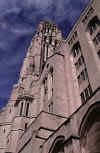
|
New York
Architecture Images-Harlem and the Heights Riverside Church |
|
architect |
Allen & Collens |
|
location |
Morningside |
|
date |
1926-30 |
|
style |
Gothic |
|
construction |
limestone, steel structure |
|
type |
Church |
|
|
 |
| Riverside Church was built with
Rockefeller money in the 1930's. Those of you who are familiar with the neighborhood will notice that there is a miniature golf course (!) where a church building now stands. Note the lack of trees in Riverside Park, now thickly forested. The building on the right is Union Theological Seminary, and the one on the left at rear is Grant's Tomb. |
|
|
images |
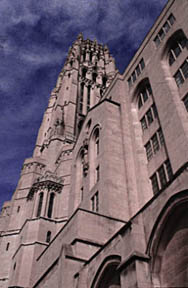
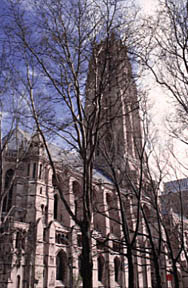 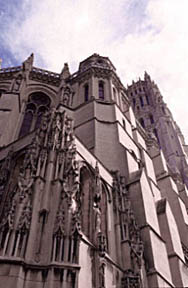 |
|
|
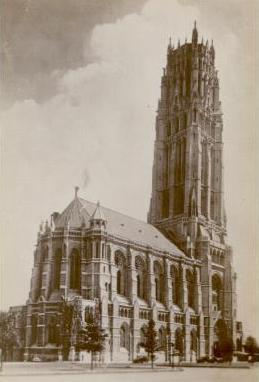 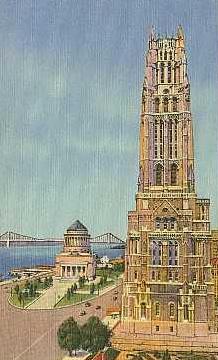 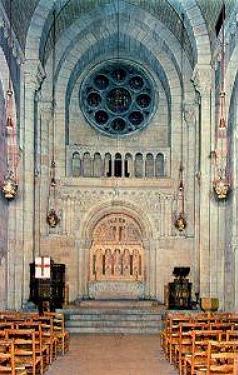 |
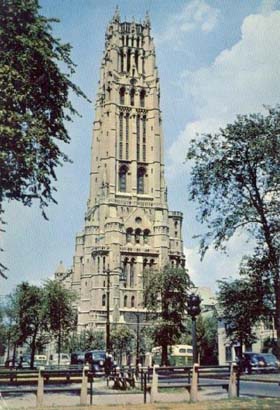 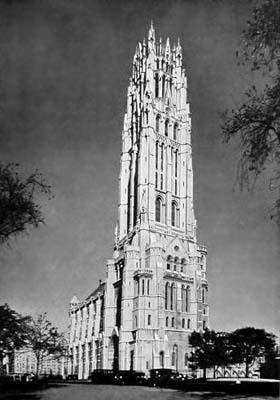 |
|
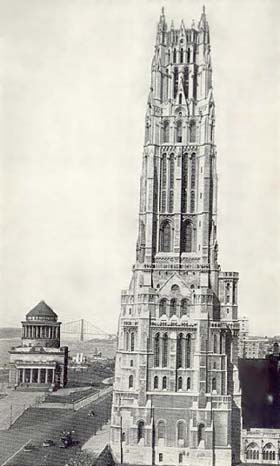 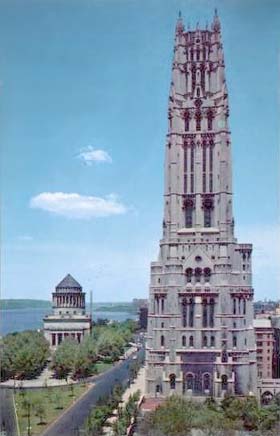 |
|
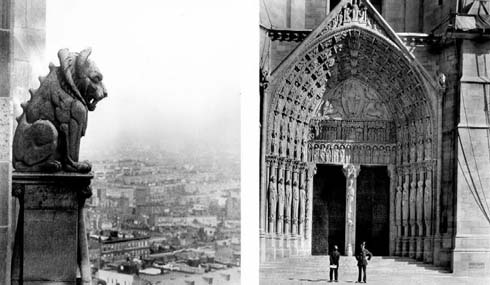 |
|
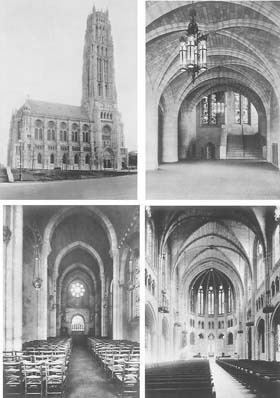 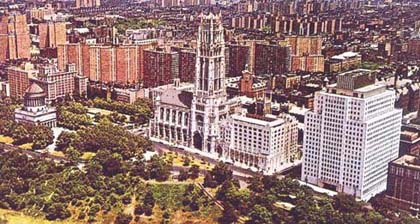 |
|
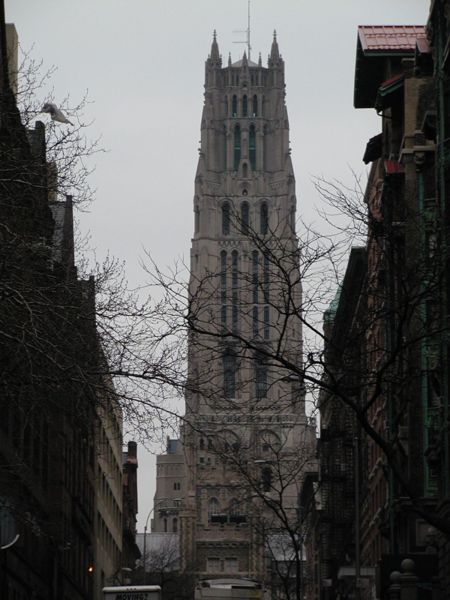 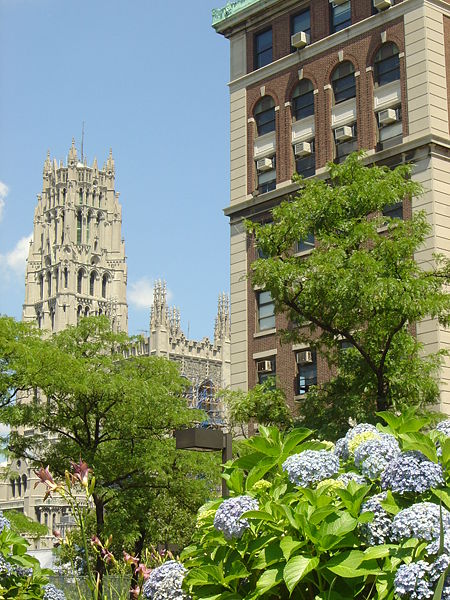 |
|
| Riverside Church as seen from West 121st Street | |
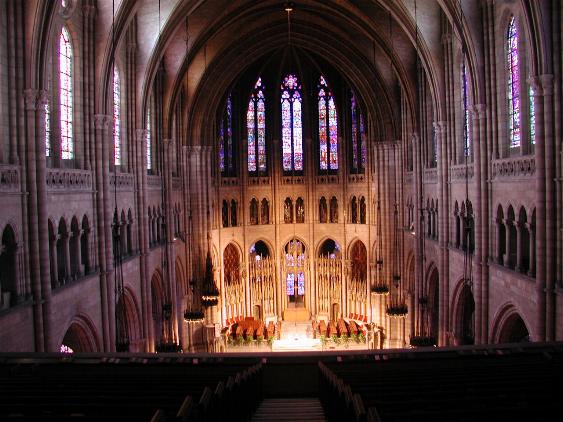 |
|
Special thanks
to www.churchcrawler.co.uk
(British and international church architecture site) for generous
permission to use above image. |
|
|
The Riverside Church in the City of New York is an interdenominational
(American Baptist and United Church of Christ), interracial,
international church in New York City, famous not only for its elaborate
Gothic architecture — which includes the world's largest carillon — but
also as a center for the promotion of progressive causes. It is situated
in Morningside Heights, Manhattan between Riverside Drive and Claremont
Avenue and between 120th Street and 122nd Street. History At the beginning of the twentieth century, Christian churches in New York City and their members were in debate over the future of their faith. Some preached a fundamentalist interpretation, made famous previously by thinkers such as William Jennings Bryan, who believed in a strict interpretation and enforcement of the Bible. Others, however, disagreed, and believed that for religion to succeed it must take what they regarded as a more modern approach and become actively involved in the world, following the example of Jesus as social revolutionary. In 1922, the congregation of the Park Avenue Baptist Church, with the major financing and support of John D. Rockefeller, Jr., a member of the church, and modernist Baptist pastor Dr. Harry Emerson Fosdick, decided to create a large, cathedral-like church dedicated to these values in New York City. This church was to be built around three main principles advocated by Rockefeller and Dr. Fosdick: a church in an interdenominational setting, a large church in a neighborhood important to the city, and a church open to all who profess faith in Christ. Based on these requirements, land was purchased by Rockefeller, Jr. and construction was completed in 1930. Modeled after a famous French cathedral (see Architecture below), the Gothic Riverside Church remains not only an important landmark for tourists, but also an important center for lively political discussion. Past speakers at the pulpit have included the Rev. Dr. Martin Luther King Jr., articulating the immorality of the Vietnam War, Nelson Mandela on his first visit to the United States after being released from prison, United Nations Secretary General Kofi Annan after September 11, 2001, and Fidel Castro during one of his rare visits to the country in 1999. The Rev. Dr. James Alexander Forbes, Jr., who was Senior Minister from 1989 to 2007, is the Distinguished Senior Minister Emeritus of The Riverside Church. His tenure is the second longest in the history of the congregation. He has been heralded by Newsweek magazine as one of the twelve most effective English-language preachers, and called one of the best black pastors by Ebony magazine. Dr. Forbes was preceded at Riverside by the Rev. William Sloane Coffin, who was senior minister from 1977 to 1987. Clergy The Rev. Dr. Thomas Stiers, Interim Senior Minister The Rev. Linda Tarry-Chard The Rev. Robert Coleman The Rev. Elice Higginbotham The Rev. J. Lee Hill, Jr. The Rev. Dr. Joan Kavanaugh The Rev. Patricia Lawson The Rev. Dr. Arnold Isidore Thomas The Rev. Dr. James A. Forbes, Jr., Distinguished Senior Minister Emeritus Architecture Riverside Church (left), as seen from the campus of Columbia University.The Church was designed by the firm of Allen, Pelton and Collens. Henry C. Pelton and Charles Collens were commissioned by Rockefeller to travel across Spain and France to find inspiration for their project. They took for their model of the nave the 13th Century Gothic Cathedral of Chartres, France, and for the massive single bell tower that dwarfs the rest of the church, one of the towers at Laon, but here with a base 100 feet square, and built on a steel frame the equivalent of a 22-story building (392 feet)[1]. Inlaid on the floor is a labyrinth similar to those at Chartres and elsewhere. The church was begun in 1926 and, with delays caused by a spectacular fire in the wooden scaffolding, finished — with its first service at the main altar — October 5, 1930. The exterior buttressing is purely decorative, for the structure is supported on its steel frame, and their weight would not be sufficient to counter the weight of the vault. The writers of the WPA Guide to New York City (1939) noted "Their smallness has the effect of making the building itself seem smaller than it is, so that its scale is scarcely impressive, even when seen at close range." The west-facing main entrance, in the base of the tower, is based on the Porte Royale of Chartres, with the seated figure of Christ in the tympanum, flanked by the symbols of the Evangelists. The figures sculpted in the concentric arches of the doorway represent leading personalities of religion and philosophy, joined by great scientists. The tower houses a carillon that John D. Rockefeller Jr. donated in memory of his mother, Laura Spelman Rockefeller, which was installed from 1925 with additional bells later. Its final complement of 74 bronze bells (at the time the largest carillon of bells in the world--see also Kirk in the Hills) include the 20-ton bourdon, the largest cast and tuned bell in existence. The church was conceived as a complex social services center from the outset, with meeting rooms and classrooms, a daycare center, a kindergarten, library, auditorium and gym. Organ The original chancel and gallery organs for the Riverside Church were built by Hook & Hastings of Boston when the church was opened in 1930. A new five-manual Aeolian-Skinner chancel console was built in 1948, followed by that firm's new chancel organ in 1953-54, retaining some of the original pipework but replacing some gallery pipework. In 1964, a new Aeolian-Skinner organ was installed in the second gallery, and all pipes were revoiced. During 1966-67, Anthony A. Bufano built a new five-manual console; at the same time, Gilbert F. Adams made major tonal revisions, including the addition of the Positiv, new pipework in the Bombarde, complete new principal choruses in the Great and Swell, chorus reeds in the Great, revoiced reeds in the Swell, Solo, and Choir, and other new flues. A rebuilt four-manual Austin console was installed in the gallery. Bufano gave the Trompeta Majestatis, built by Möller and voiced by Adolph Zajic, in memory of his mother in 1978. The Grand Chorus division was added two years later (1980), and a complete new principal chorus was installed in the chancel Pedal. In 1994, a Solid State Logic multi-level combination action was installed and the console was completely rewired. In summer 1995, the dry acoustics were improved when 10 coats of sealant were applied to the ceiling. During 1995-96, organ curator Robert Pearson supervised the complete cleaning, tuning, and revoicing of the organ to suit the new acoustical environment.[2]. The organ is presently the 14th largest in the world.[3] The current organist is Timothy Smith. Past organists at the Riverside Church include Virgil Fox, Frederick Swann, and John Walker (now at Brown Memorial Presbyterian Church).. Artwork In the Riverside Church hang three paintings by Heinrich Hofmann which were purchased by John D. Rockefeller, Jr.: Christ in the Temple (1871), Christ and the Young Rich Man(1889), and Christ in Gethsemane (1890). |
|
| This Baptist Church was funded in large part by John D. Rockefeller Jr., whose wealthy family often used building endowments to cement their position in New York society and American politics. Built in the French Gothic style, the elaborate form of the church and its fine materials (such as stained glass) are at odds with the simple, pared-down style that normally characterizes Baptist ecclesiastical architecture. With an interior based on the Chartres Cathedral, the design shows off the Rockefellers' ability to straddle European and American building traditions. Modeled on Laon Cathedral, the church's bell tower is actually a 21-story steel-frame high-rise. Its enormous size all but overwhelms the nave beyond. | |
|
links |
|